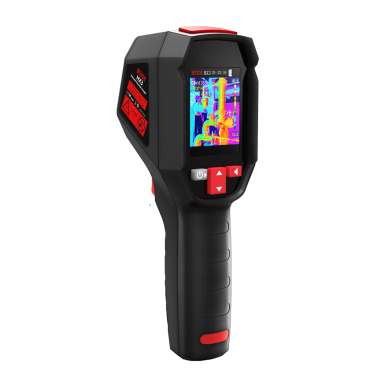
# Ear Thermometers: Accurate and Non-Invasive Temperature Measurement
## Introduction to Ear Thermometers
Ear thermometers, also known as tympanic thermometers, have become increasingly popular in both clinical and home settings for measuring body temperature. These devices offer a quick, accurate, and non-invasive way to monitor temperature, making them particularly useful for children and adults alike.
## How Ear Thermometers Work
Ear thermometers utilize infrared technology to measure the heat emitted by the eardrum and surrounding tissue. The device is inserted gently into the ear canal, where it detects infrared radiation and converts it into a temperature reading. This method is based on the principle that the eardrum shares blood supply with the hypothalamus, the body’s temperature control center, making it an excellent indicator of core body temperature.
### Key Features of Modern Ear Thermometers:
– Fast readings (typically 1-3 seconds)
– Hygienic probe covers
– Memory functions for tracking temperature trends
– Fever alarms
– Backlit displays for nighttime use
## Advantages of Ear Thermometers
Ear thermometers offer several benefits over traditional oral, rectal, or underarm thermometers:
### Accuracy and Speed
When used correctly, ear thermometers provide highly accurate readings comparable to rectal thermometers, which are considered the gold standard for temperature measurement. The speed of measurement (just seconds) makes them particularly valuable when dealing with restless children or patients who may not tolerate longer measurement methods.
### Non-Invasive Nature
Unlike rectal thermometers, ear thermometers don’t cause discomfort or require special positioning. This makes them more acceptable to patients, especially children, and reduces stress during temperature-taking.
### Hygiene Benefits
Most ear thermometers use disposable probe covers, minimizing the risk of cross-contamination between users. This is especially important in clinical settings or households with multiple family members.
## Proper Usage Tips
To ensure accurate readings with an ear thermometer:
– Pull the ear gently upward and backward (for adults) or straight back (for children) to straighten the ear canal
– Insert the probe snugly but gently into the ear canal
– Aim the thermometer toward the eardrum
– Hold the thermometer steady until the measurement is complete
– Use a clean probe cover for each measurement
## Limitations and Considerations
While ear thermometers are generally reliable, certain factors can affect their accuracy:
– Excessive earwax buildup
– Ear infections
– Improper positioning
– Recent exposure to extreme temperatures (such as coming in from cold weather)
For infants under 3 months, rectal thermometers may still be recommended by pediatricians as they provide the most accurate measurement for this age group.
## Choosing the Right Ear Thermometer
When selecting an ear thermometer, consider:
– Clinical validation and accuracy ratings
– Ease of use and display readability
– Memory functions
– Warranty and customer support
– Availability of replacement probe covers
Many high-quality models are available at various price points, from basic models for home use to professional-grade devices for clinical settings.
## Conclusion
Keyword: Ear Thermometers
Ear thermometers represent a significant advancement in temperature measurement technology, offering a combination of accuracy, speed, and comfort that makes them ideal for both home and professional use. By following proper usage techniques and understanding their limitations, users can rely on these devices for consistent, reliable temperature monitoring. As with any medical device, it’s important to read and follow the manufacturer’s instructions carefully to ensure optimal performance.